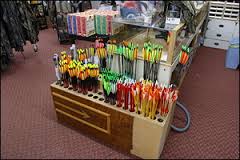Posted by Heidi C on 10th May 2016
Can a compound bows draw length be adjusted?
Learning a new skill is a great way to stretch yourself and improve the quality of your character. What's more, perfecting a hobby, technical skill or artistic form may be challenging at first, but if you master it, you will gain a sense of accomplishment, purpose and enjoyment. What's more, you add to your pool of leisure activities and make yourself a more rounded human being.
One hobby that you might be interested in developing is archery. However, you will also come across different terms that you have no idea on, or have never heard of especially if you are a newbie in this field. For starters, here is one question that is commonly asked by people who want to learn. Let us start by knowing more about “compound bows”.
Can a compound bows draw length be adjusted?

Compound bows are distinctive in look because of the cams or pulley system used at each end of the bow. This technology allows for a “let off” capacity. This is the point during the pull back motion when the archer can hold less weight. This type of bow is favored by many archers because it allows for increased aim time, and greater control that invariably leads to a greater degree of accuracy in hunting and target based archery.
Fortunately, most compound bows can easily be adjusted for different draw lengths. In many cases, draw length is user-adjustable with just a hex wrench - should you decide to make changes on your own later. Again, the draw length of a compound bow can only be set within the bow's specified mechanical range.
A LITTLE BACKGROUND INFO
Compound bows are a little different from traditional recurves and longbows. Unlike traditional bows which can be drawn back practically any distance, compound bows are engineered to draw back only so far - and then stop. This distance is known as the bow's "draw length" - and it's controlled by the mechanical systems on the bow. The trick is ... the mechanical setting of the bow and the physical size of the shooter need to match. If your physical size requires a bow with a draw length setting of, say, 29 inches, then it can be said that "your draw length" is 29 inches. So both YOU and the BOW have a draw length - so to speak - to consider.
DRAW TO FULL-DRAW THEN SHOOT
It's important to note that compound bows are designed to be shot only from the full-draw position (whatever that mechanical setting may be). If a compound bow is set for a 29" draw length, for example, it should always be drawn back to a full 29" and then shot from that position. You don't shoot from the middle of the power stroke - you only shoot after the bow reaches its full draw. If you haven't shot a compound bow before, don't worry. It's much easier to "feel" than explain. You draw the bow back until you feel the mechanical stop - then you take aim - then you shoot! Easy.
Don't Try to Overdraw
On most compound bows, the mechanical stop is quite firm. A bow that's set for 29" draw cannot be drawn back to 30" or 31" without modifying the mechanical setup on the bow.Never attempt to forcibly overdraw a bow beyond the mechanical stop. Draw your bow in a slow and controlled manner. Just after your bow achieves full let-off, you will feel the touchdown at "the wall." That's it. You're ready to shoot. Most modern compounds take less than 20 lb. of pressure to hold back at full draw. So if you're still grunting and straining at full draw, you're trying to forcibly overdraw the bow. So be cool. When you get to full draw, relax. You made it.
ADJUST THE BOW TO YOU - NOT THE OTHER WAY AROUND
Of course, the proper draw length setting varies from shooter to shooter. Taller shooters generally need more draw length, shorter shooters less. Fortunately, most compound bows can easily be adjusted for different draw lengths. In many cases, draw length is user-adjustable with just a hex wrench - should you decide to make changes on your own later. Again, the draw length of a compound bow can only be set within the bow's specified mechanical range. So you must choose a bow that can adjust to fit you properly.
Don't just fill your mind with facts. It is one thing to learn the steps to a process; and entirely another to feel them as they become integrated into your being. An idea must sit in your mind and undergo digestion and analytical thought before you can benefit fully from the information you have taken in. Don’t fret when you are just learning the basics about archery. Always keep your cool, remember the tips and information that this article provided for you and you will be fine. Now that you know about compound bows, maybe you will be eager to try one out soon?

